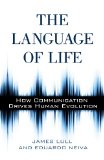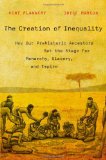new book – ‘The Language of Life: How Communication Drives Human Evolution’ by James Lull and Eduardo Neiva
May 2, 2012
The Language of Life: How Communication Drives Human Evolution by James Lull and Eduardo Neiva (Prometheus Books, 2012)
Book description from the publisher:
Introducing “evolutionary communication” and a brilliant interpretation of life
Communication in its most basic form—the sending of signals and exchange of messages within and between organisms—is the heart of evolution. From the earliest life-forms to Homo sapiens, the great chain of communication drives the evolutionary process and is the indispensable component of human culture.
That is the central message of The Language of Life. In this unique perspective on both the biological evolution of life and the human development of culture, James Lull and Eduardo Neiva explore the totality of communication processes that create and sustain biological equilibrium and social stability. The authors, two international authorities on communication and culture, argue that this ubiquitous connectivity is the elemental unity of life.
Introducing a new subdiscipline—evolutionary communication—the authors analyze the core domains of life—sheer survival, sex, culture, morality, religion, and technological change—as communications phenomena. What emerges from their analysis is a brilliant interpretation of life interconnected through communication from the basic molecular level to the most sophisticated manifestations of culture.
Challenging the boundaries of conventional approaches to cultural analysis, The Language of Life presents an original and engaging view of evolution and an encouraging prognosis for our collective future.
See also: James Lull’s website







